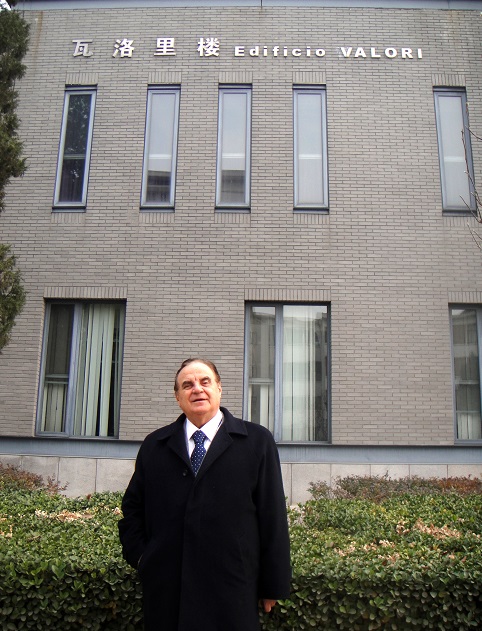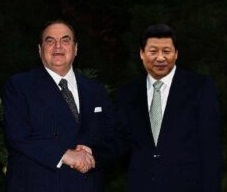How many Chinese are there in the world outside their homeland? Speaking of overseas Chinese – be they of Chinese citizenship or origin – we must admit that we can find them in almost every corner of the world.

According to statistics from 2022, the number of overseas Chinese is a diaspora of over 60 million, spread across 198 countries and regions all over the planet. In this article, I will cover the countries with the highest number of Chinese people.
Let us talk about Indonesia first. Indonesia is the world’s largest archipelago with a number of islands ranging between 17,500 and 18,300 and it is also the largest economy in Southeast Asia. The population of Indonesia (277,534,122 inhabitants) ranks fourth in the world, after India, the People’s Republic of China and the United States of America.
Indonesia is known as the country with the largest Chinese population. According to statistics, about 5% of the Indonesian population is Chinese (over 10 million), and more than 90% of them have become Indonesian citizens. Most Indonesian Chinese come from the Southern provinces of China, such as Fujian, Hainan and Guangdong. Chinese Indonesians are mainly distributed in cities such as Jakarta, Surabaya, Medan, Pekanbaru, Semarang, Pontianak (Pontianak), Sijiang (Makasa), Palembang, Bandung and Pangkal Pinang.
However, due to some particular historical reasons, the local Chinese are relatively sensitive to their Chinese identity. In recent years, the Indonesian government has implemented a policy of democratic reform and openness, recognising the Chinese as members of the Indonesian national family, and the status of the Chinese has improved. According to Indonesia’s official census, there are currently about 2.8 million Indonesian Chinese who recognise their Chinese identity.
With China’s fast rise, and the gradual improvement of relations with Indonesia, an increasing number of Indonesian Chinese can confidently claim to be Chinese.
In Thailand there are currently more than 30 ethnic groups, with a total population of over 71,801,279. The main ethnic group in the country is the Thai, which accounts for 40% of the population. The second largest group is the Lao, which accounts for 35% of the total population. The Chinese account for 14% of the total population, while the Malaysians account for 2.3% of the total population. These ethnic groups account for the largest share of Thailand’s total population, while other ethnic groups are found in smaller proportions.
There are now almost 10 million Chinese in Thailand and most Chinese in Thailand come from Guangdong, Chaoshan, Xiamen and other regions. The Chinese in Thailand have a long history and can be found in large numbers. They have provided a remarkable contribution to the development of Thailand itself.
The Malaysian Chinese (34,308,525 inhabitants) are the second largest ethnic group, with about 7.4 million people, accounting for about 21.5% of the total Malaysian population. Data shows that Malay Chinese (or ethnic Chinese) refer to immigrants and their descendants who came to the country from Fujian, Guangdong, Guangxi and Hainan provinces in China over hundreds of years starting from the Ming (1368-1644) and Qing (1644-1911) dynasties.
The share of Chinese in Malaysia’s demographic structure is currently decreasing year by year. According to statistics from the Asia Strategy and Leadership Institute, Malaysia’s largest independent think tank, if the country’s current immigration trend remains unchanged, the percentage of Malaysian Chinese in the national population will drop from 38.2% in 1957 to 19.6% in 2030.
There are also many Chinese in the United States of America (339,996,563 inhabitants), coming from the motherland and from all over the world, who later naturalised as US citizens, including their descendants.
According to the latest data released by the US Federal Census Bureau, the total Asian population in the USA has reached 21.4 million, with the Chinese population leading the way with 5.08 million. Most of them are concentrated in California, New York and metropolitan cities.
Chinese Americans mainly come from Changle, Lianjiang, Fuqing and other regions of Fujian Province, Gaocheng, Hengshui and other regions of Shijiazhuang, Hebei Province and the Northeast region.
The city-state of Singapore (4,044,000 inhabitants according to the 2020 census) is the only country, with the obvious exception of China, where the Chinese population is the majority with 3,006,800 inhabitants (74.3% of the population). Malay is the national language of Singapore; English, Chinese and Tamil are official languages and English is the administrative language.
Indeed, Singapore’s early trade and development as a trading centre saw the growth of a large Chinese community within the British colony. The Chinese come mainly from the Hokkien, Chaozhou, Cantonese, Hakka, Qiong and Fuzhou dialect groups of the South-Eastern coastal provinces of China, such as Guangdong, Fujian and Hainan. Forty per cent of them are Hokkien, followed by Chaoshan, Cantonese, and Hakka, Hainanese and Fuzhou, etc.
According to the results of Statistics Canada’s demographic analysis, there are about 1.77 million Chinese people in Canada (38,781,291 inhabitants) and the percentage of Chinese in Vancouver has reached 21%.
The Chinese account for 4.6% of the total population and rank seventh among all ethnic groups, while the top six are Canadian, British, Scottish, French, Irish and German groups. By contrast, as we have seen in the United States of America, which is also a large immigrant country, the Chinese account for less than 1.5%.
Myanmar (Burma) borders China and the two countries share a common border of over 2,000 kilometers. The two countries are neighbors, friends dependent on each other that have always shared benefits, as well as the misfortunes of colonialism. Since ancient times, the people of the two countries formed caravans and traveled across mountains and rivers to trade in goods. Since the border between the two countries was unclear in ancient times, overland trade between Yunnan and Bhamo led to the seasonal migration of the “’mountain Chinese” to Myanmar.
There are currently about 1.63 million Chinese living in Myanmar (54,577,997 inhabitants), accounting for approximately 3% of the population. Chinese communities in Myanmar live in different areas. In terms of distribution, in cities such as Yangon, the Chinese population is dominated by Cantonese (including Hakka, Chaoshan, etc.) and Fujianese, and most of them run small businesses. Some carry out trade and have significant joint ventures in Singapore, Xianggang (Hong Kong) and Taiwan, The Kokang Chinese and Muslim Chinese live mainly in the border area between China and Myanmar.
Today in the Philippines (117,337,368 inhabitants), nine out of ten of their Chinese ancestors came from Southern Fujian (Quanzhou, Zhangzhou, Xiamen), with Quanzhou that saw the largest emigration (80-90% of Chinese in the Philippines). The remaining 10% came mainly from Guangdong, with only a few from other provinces. Hokkien is the lingua franca of the Filipino-Chinese community. In total, Chinese ancestry accounts for about 20% in the Filipino nation. Considering the current Filipino population, there could be more than 10 million people with Chinese ancestors. However, in the past, due to the underdevelopment of Chinese education, most people with Chinese ancestors rarely had the opportunity to receive a Chinese education and declare themselves of Chinese origin. Considering also the Catholic faith, the result was that a Chinese person was assimilated to an indigenous Filipino.
There are Chinese also in South America. 1.3 million Chinese live in Peru (34,352,719 inhabitants). It is estimated that, in Peru, Peruvian Asians account for at least 5% of the population. One source stated that the number of citizens with Chinese ancestors could be as high as 5 million (15-16% of the country’s total population). At the moment, however, the data is not checked and verified.
Most Peruvian Chinese speak several languages and, in addition to Spanish or Quechua, many of them can speak at least Mandarin and Chinese dialects, including Cantonese, Hakka, Mandarin and Hokkien. Since the first group of Chinese immigrants came from Macau, some of them also spoke Portuguese.
In Australia (26,439,111 inhabitants), the total Chinese population is approximately 1,214,000 million (4.59% of the total population). The Chinese community has become Australia’s largest non-English-speaking minority group.
For the Chinese groups that currently choose to stay in Australia, judging from the latest Australian census data released by the Australian Bureau of Statistics, not only is the number of Chinese increasing, but their influence on this country is also growing, and they also play a greater role in strengthening cultural exchanges and cooperation between the two States.
In addition to the ten countries mentioned above, there are Vietnam, the Republic of Korea (South) and Cambodia with a Chinese population exceeding one million. Furthermore, France, Japan, the United Kingdom of Great Britain and Northern Ireland, Venezuela, the Republic of South Africa, Italy, Brazil, Russia, Spain, New Zealand, the Netherlands, Germany, India and other countries have an overseas Chinese population of over 100,000.
Broken down by country and region, more than 70 per cent of overseas Chinese are concentrated in Southeast Asia, while Indonesia, Thailand and Malaysia alone account for about 60 per cent of the total number of overseas Chinese in the world.
Today, the overseas Chinese – or as I would call them, “the necklace that stretches the Silk Road” – are a gateway, a link between the People’s Republic of China and the home countries of its distant citizens. They have become an important force in cultural and economic exchanges between China and the rest of the world.

Giancarlo Elia Valori– Honorable de l’Académie des Sciences de l’Institut de France, Honorary Professor at the Peking University, President of the International World Group and Global Strategic Business, Consultant to the Chinese HNA Group and Honorary Chairman of Huawei Italy.







